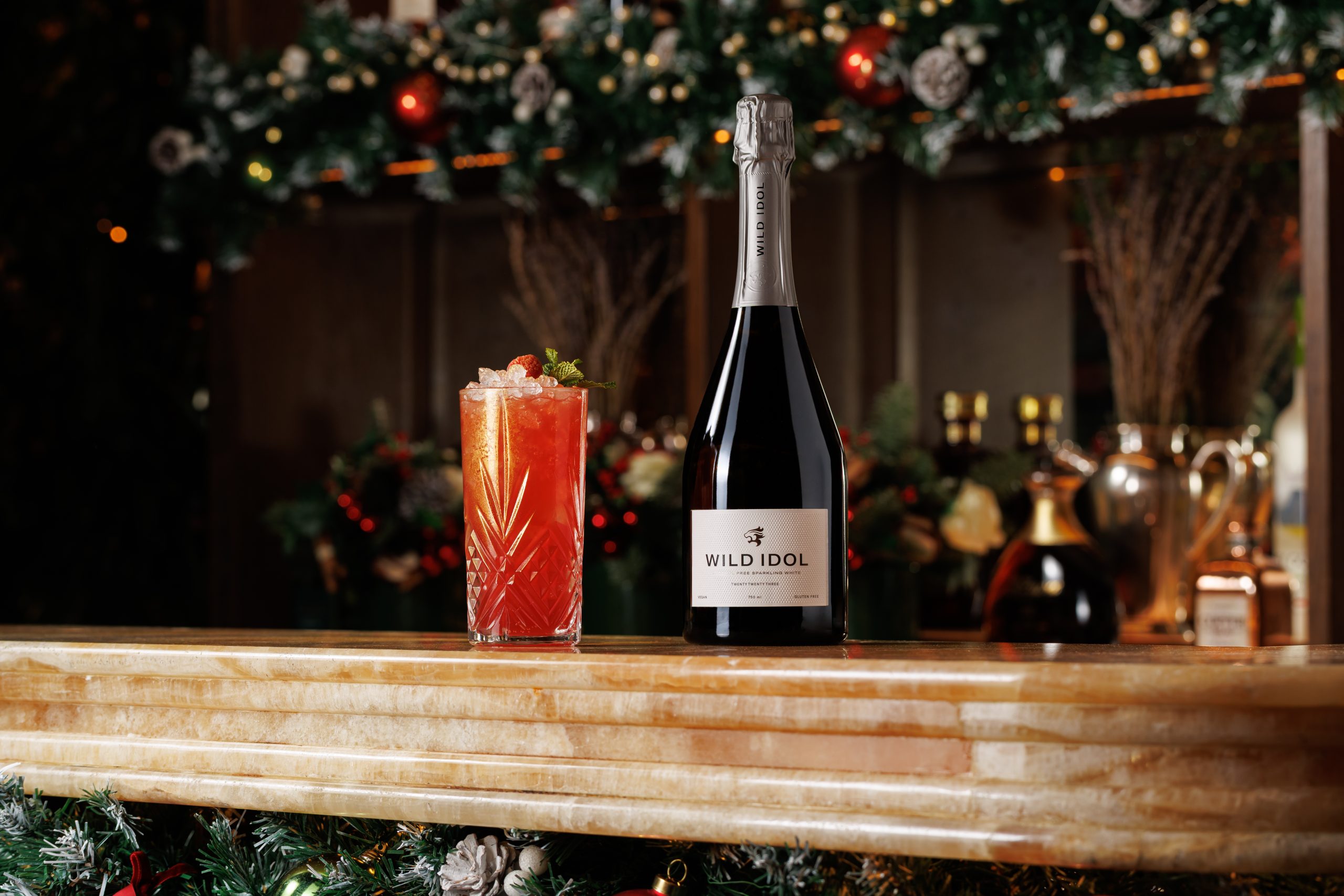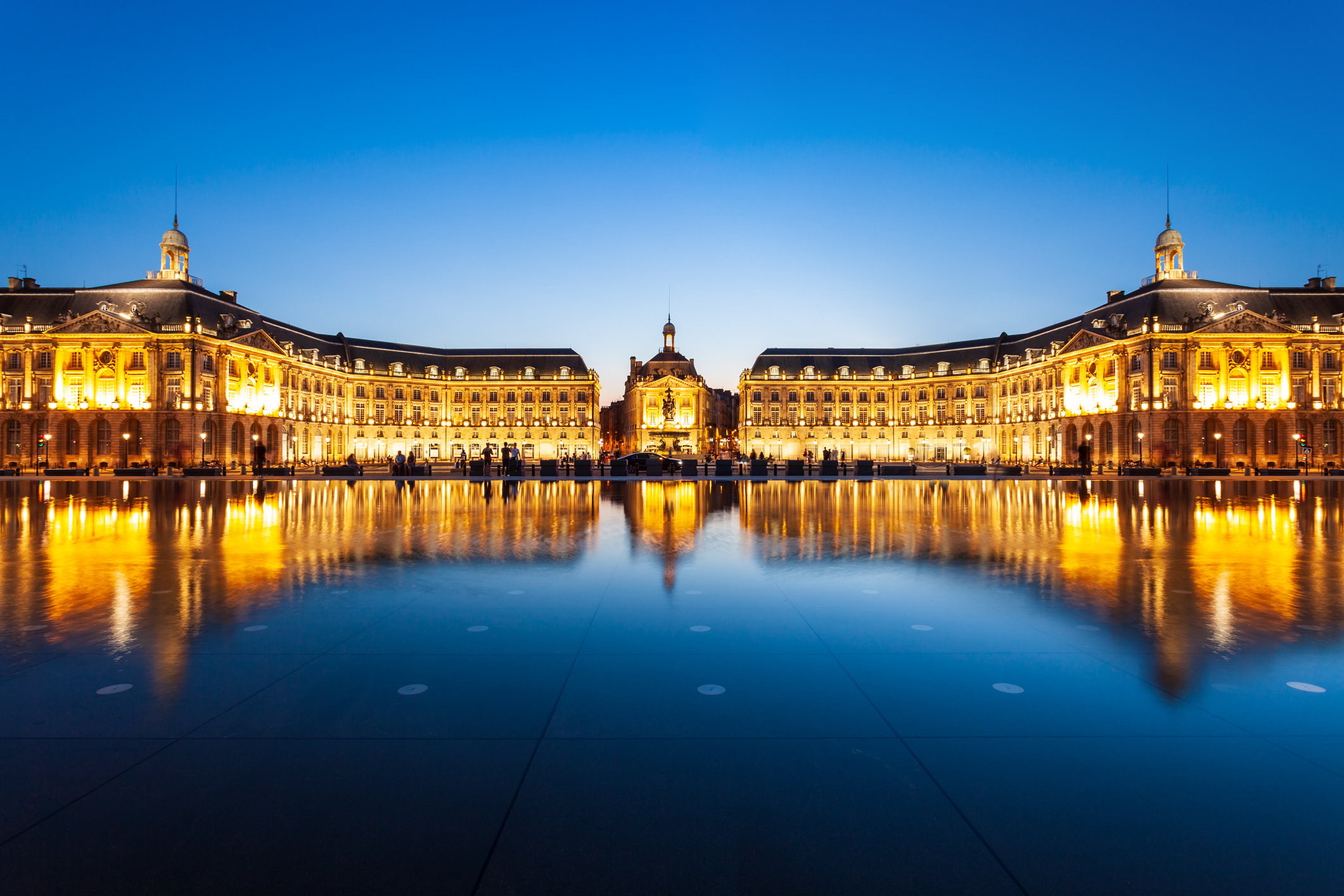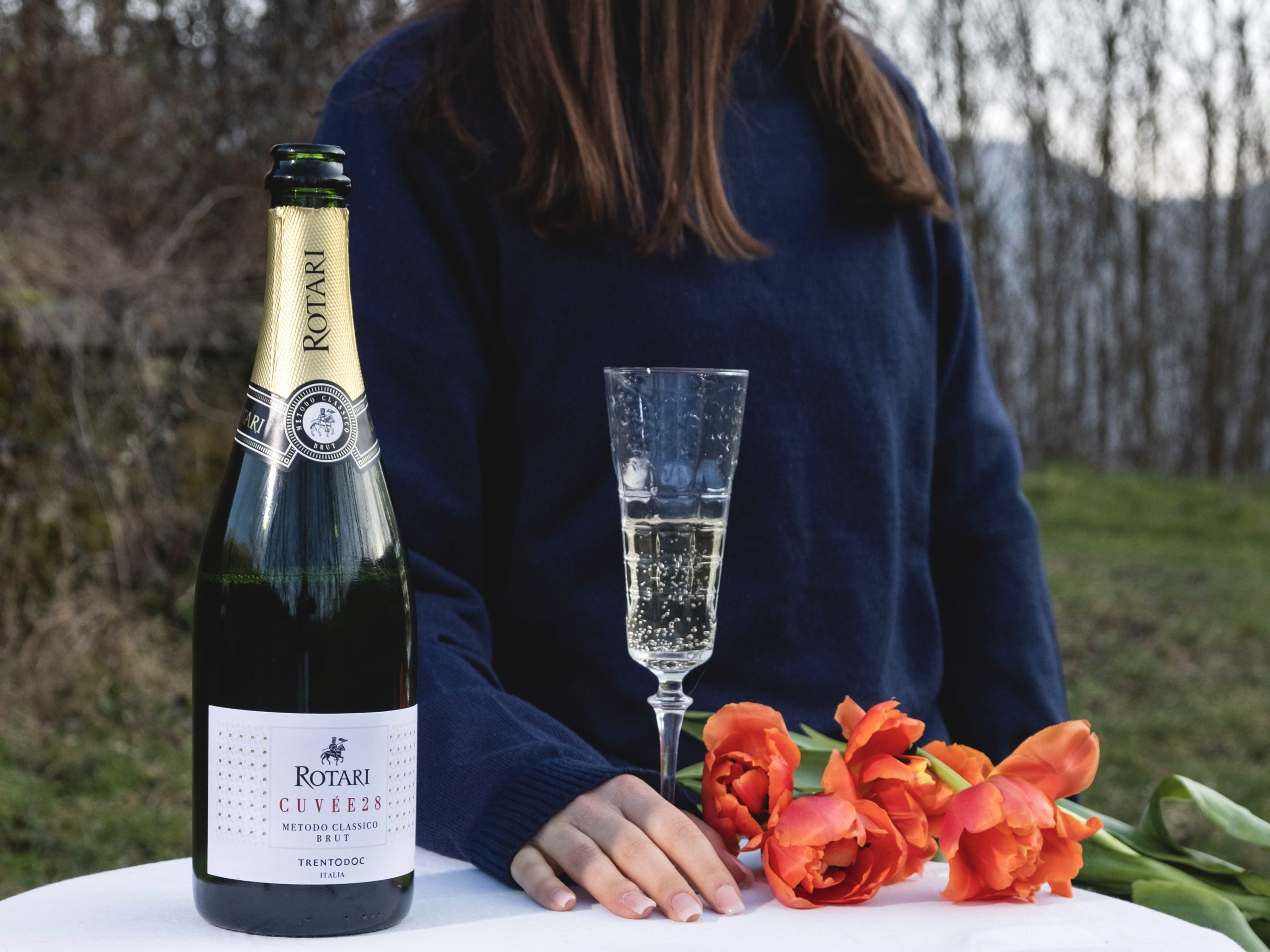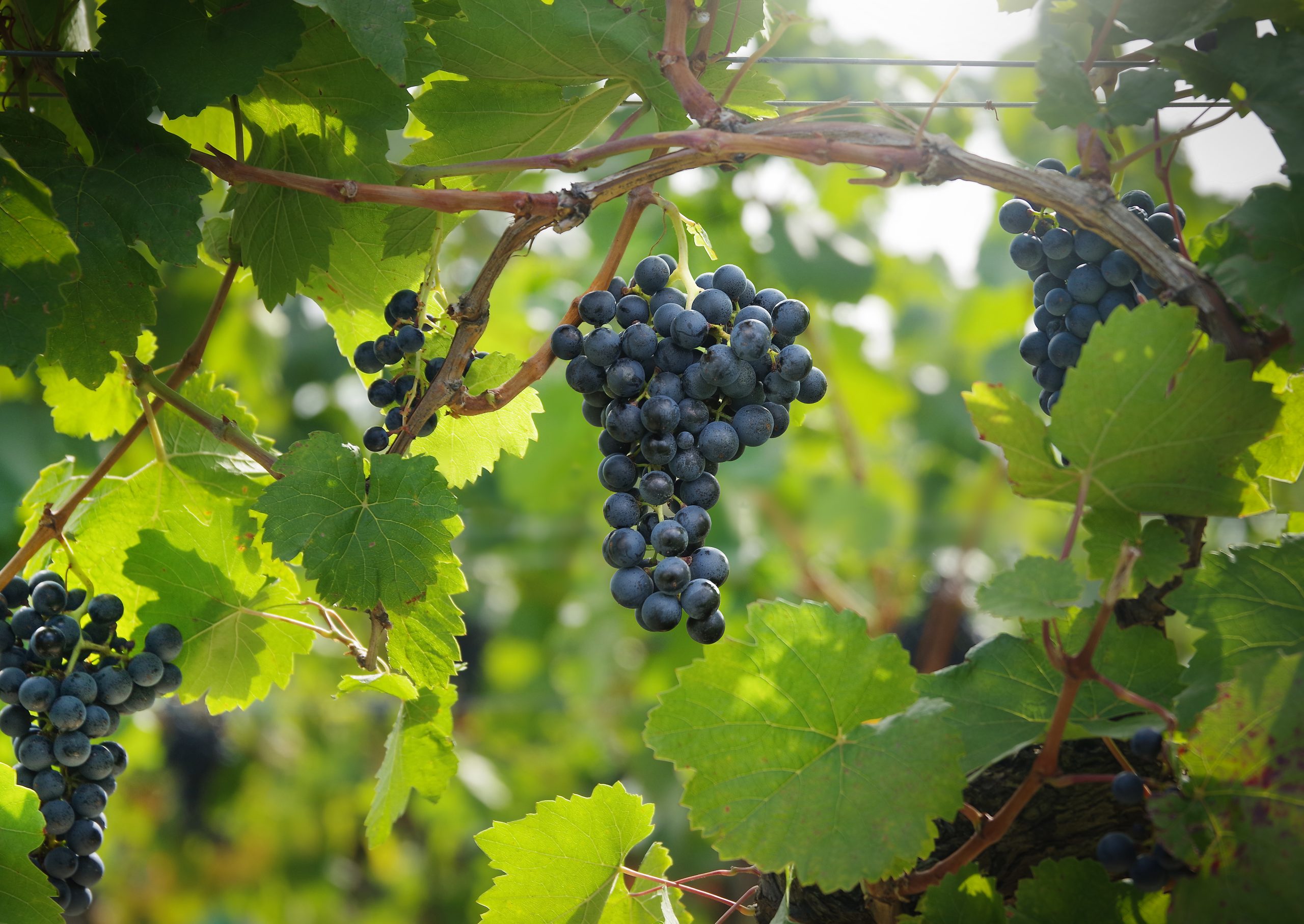The 6 biggest no and low trends for 2025
Low and no-alcohol products continue to capture the imagination of consumers. Sarah Neish investigates the top trends taking the category by storm in 2025.
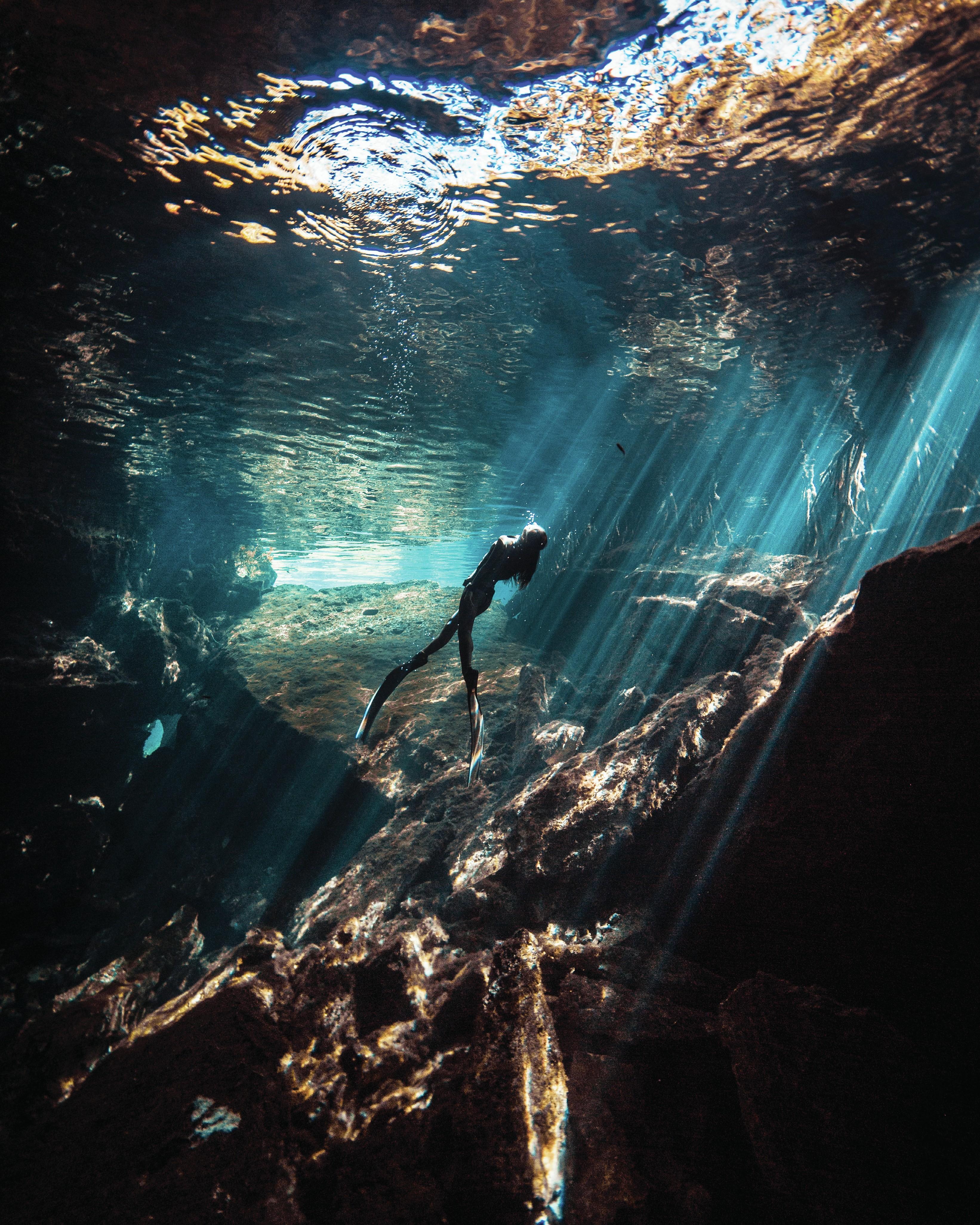
As we emerge, blinking, from underneath a makeshift quilt of Quality Street wrappers and panettone crumbs following a Christmas of indulgence, talk inevitably turns to Dry January and, if not abstinence, then at least moderation.
Until recently, the latter two words were guaranteed to strike fear into the hearts of alcoholic drinks producers. But no longer, as almost all have branched out into the no- and low market to some degree.
According to statistics from market intelligence agency Mintel, the UK’s no- and low-alcohol drinks market was predicted to be worth £380 million by the end of 2024, before growing to as much as £800m by 2028, according to IWSR projections. And that’s just in the UK. The latest IWSR figures forecast global growth of no-and-low to be US$4 billion by 2028.
In December, IWSR said that the no- and low-alcohol drinks market is experiencing “a transformative period of growth”, and highlighted the US and Brazil as the two biggest growth markets in the world for alcohol-free products. Despite all the talk of lower-alcohol wine, beer and spirits as a sub-category to watch, IWSR data suggests low-alcohol sales are still lagging behind no-alcohol by quite some way.
“Across 10 key markets, the combined no-/low-alcohol market is expected to expand by +4% volume CAGR [compound annual growth rate] through 2028, with no-alcohol driving the majority of this growth at +7% volume CAGR, while low-alcohol volumes remain broadly static,” said the beverage alcohol data specialist.
Retailer behaviour
The extraordinary trajectory of alcohol-free drinks is reflected in retailer behaviour.
In December, UK wine retailer Majestic partnered with no and low-alcohol drinks specialist Club Soda to stock nine Club Soda products in all 212 Majestic stores, as well as online. Majestic said the move follows on from a 600% sales spike in no- and low-alcohol products in its stores since March 2022, adding that the extra listings were designed to “cater to ever-growing demand in the category”.
At Waitrose, sales of no- and low-alcohol shot up by nearly 20% last year, with the supermarket’s Food & Drink Report 2024 noting the growing trend for ‘zebra-striping’, where consumers alternate between alcoholic and nonalcoholic drinks.
Also in December came a first for Chilean wine brand Casillero del Diablo, owned by powerhouse Concha y Toro, which launched its inaugural alcohol-free wine. The de-alcoholised fizz, called Casillero del Diablo Zero, is made from 100% early-harvested Chardonnay grapes sourced from the Central Valley of Chile.
Duty changes
With the UK’s looming duty changes expected to come into force from 1 February, a further escalation in no-and-low sales could be on the horizon.
“The revised UK duty laws will undoubtedly drive growth in the no-and-low category, encouraging brands to innovate within mid-strength and lowalcohol ranges,” says Paul Schaasfma, managing director of Benchmark Drinks, which distributes Kylie Minogue’s record-breaking 0% Sparkling Rosé.
“With lower tax rates for drinks under 3.5% ABV, producers have a clear incentive to expand their offerings and invest in product development within the no-and-low category.”
Additionally, he tells db: “The new laws provide producers with opportunities for better planning and focusing on earlier harvests to optimise low-alcohol wine production.”
It’s crystal-clear that consumer demand is there. The challenge will be whether retail infrastructure and Government policy can keep up.
What’s ultimately needed to drive the no-and-low category forward this year, says Club Soda founder Laura Willoughby, is “more investment into fast-growing brands, and the Government finally sorting out the descriptors for alcohol-free. They are hobbling an industry in which the UK was a pioneer, and it makes me sad that they care so little when the economic and health benefits are so obvious”.
More data collection is also needed to ascertain exactly who is drinking no-and low-alcohol products as the category evolves.
“Robust data on specific demographic trends remains limited,” says Paul Beavis, CEO of naturally alcohol-free sparkling wine Wild Idol. “Anecdotal evidence suggests a broadening audience, but more comprehensive data over the next five to 10 years will be needed to establish clear and detailed patterns regarding age, gender and other characteristics.”
Read on to discover the biggest no-and-low-alcohol trends for 2025.
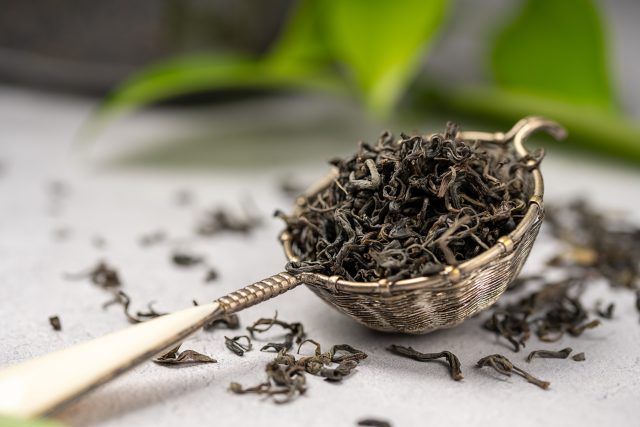
1. Sparkling tea
This year is all about naturally alcohol-free sparkling tea, with two of the UK’s luxury retailers already flying the flag for this innovation. Berry Bros. & Rudd (BBR), the UK’s oldest fine wine merchant, launched a sparkling tea by The Real Co. in time for Christmas 2024, with BBR ambassador Barbara Drew MW telling db: “The thing I’m most excited about this Christmas isn’t a wine or a spirit, but a tea.”
BBR sold through one-third of its first batch of bottles, priced at £16.95 each, by the start of December, and plans to order more for the new year.
At Fortnum & Mason, wine and spirits buyer Oscar Dodd told db that the luxury department store’s own offer, produced by Copenhagen Sparkling Tea, was responsible for more than one in five of all sparkling options sold in-house, including Champagne. In fact, its sparkling tea has proved so popular that the London store is now stocking it in a new magnum format, and plans to launch it in half-bottles later in 2025.
Neither BBR nor Fortnum’s, however, were as quick off the mark as Kylie Minogue, who has incorporated tea in her best-selling 0% Sparkling Rosé since its launch in December 2022.
“A key challenge for the no-and-low sector is overcoming the flavour loss caused by de-alcoholisation, which often strips beverages of their complexity,” explains Benchmark’s Paul Schaafsma.
“Our Kylie 0% Blanc and Rosé wines use an innovative approach by fermenting premium grapes with bacteria instead of yeast, thus producing no alcohol formation during the fermentation process. These wines are then infused with hand-selected teas, carefully crafted to replicate the acidity and flavour balance of traditional wines.”
Schaafsma believes that, as consumer preferences evolve, there will be “a wave of experimentation, with tea-infused options gaining prominence”.
Green tea in particular, he adds, brings “depth and tannin” to alcohol-free wines.
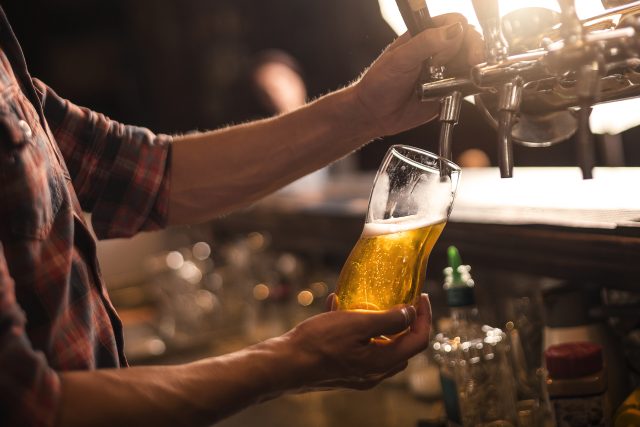
2. More alcohol-free beer on draught
According to the British Beer and Pub Association (BBPA), no-and-low beer sales in UK pubs were on track to reach a record 140m pints in 2024, around 20m pints more than in 2023. Around 86% of UK pubs now serve a no-or-low beer option, although only 8% serve it on draught. This could be one area that’s ripe for development.
“We’re making steady progress on draught,” Chris Furnari, senior communications manager for Athletic Brewing, tells db.
Partner Content
“Customer excitement is high, and we believe that more pubs and restaurants will look to serve nonalcoholic beer on draught over time.”Some markets are more amenable to draught than others, he adds. “The UK has been much more receptive to alcohol-free draught beer, but retailer hesitancy in the US remains a hurdle. In our experience, accounts that align with our own standards by prioritising food safety and quality have been among the most receptive to alcohol-free draught beer.”
Athletic Brewing began commercial-scale distribution of its beer on draught as a pilot programme in March 2023 and, says Furnari, “we expect to be able to share an exciting update about our draught programme in the first quarter of 2025”.
According to Club Soda’s Laura Willoughby: “Lucky Saint, Heineken 0.0 and Guinness 0.0 on draught are all also making alcohol-free beer more visible in the on-trade.”
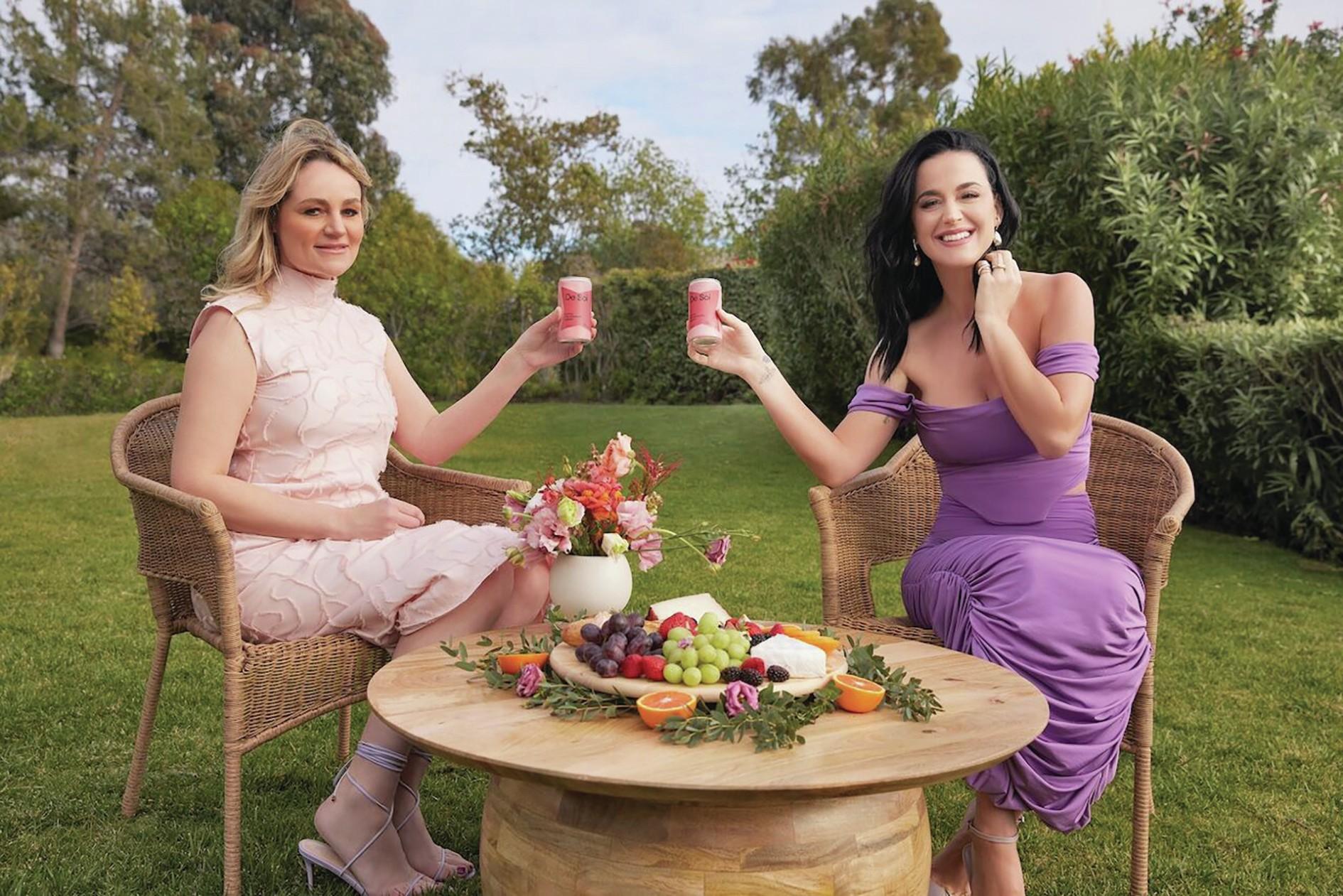
Katy Perry’s De Soi drinks contain adaptogens
3. Functional drinks to dominate sales
This year, functional drinks (those designed to offer ‘health benefits’ or to enhance wellbeing) will also continue to gain momentum in 2025.
“Consumers are increasingly drawn to drinks that provide added value, such as supporting health through innovative ingredients,” says Wild Idol’s Paul Beavis. He believes that drinks with functional elements, “including those infused with ingredients like CBD, collagen or other health-focused additives”, are likely to see substantial growth in 2025, “both in the UK and internationally”.
One brand to capitalise on the functional trend is De Soi, the adaptogen aperitif brand launched in 2022 by pop star Katy Perry. In October, De Soi released a limited-edition ‘après-ski aperitif’ called the St-Moritz Mule, which contains “relaxing adaptogens” such as L-theanine, reishi mushroom and lion’s mane. Described by the brand as “bright and warm, with a mind-mellowing buzz without the booze”, it cleverly taps into the affluent ski market at a time where not everyone wants to hit the slopes after a skinful.
“According to Beverage Daily, more than 50% of Americans want to drink less, while 82% actively seek functional ingredients in their beverages,” says Amruta Vyas, director of brand marketing for De Soi. “This reflects a growing health consciousness, as opposed to alcohol, which has lost its former ‘health halo.’
Instead, people are leaning into natural relaxants, like adaptogens and botanical blends, which offer a way to unwind without alcohol’s negative effects.”
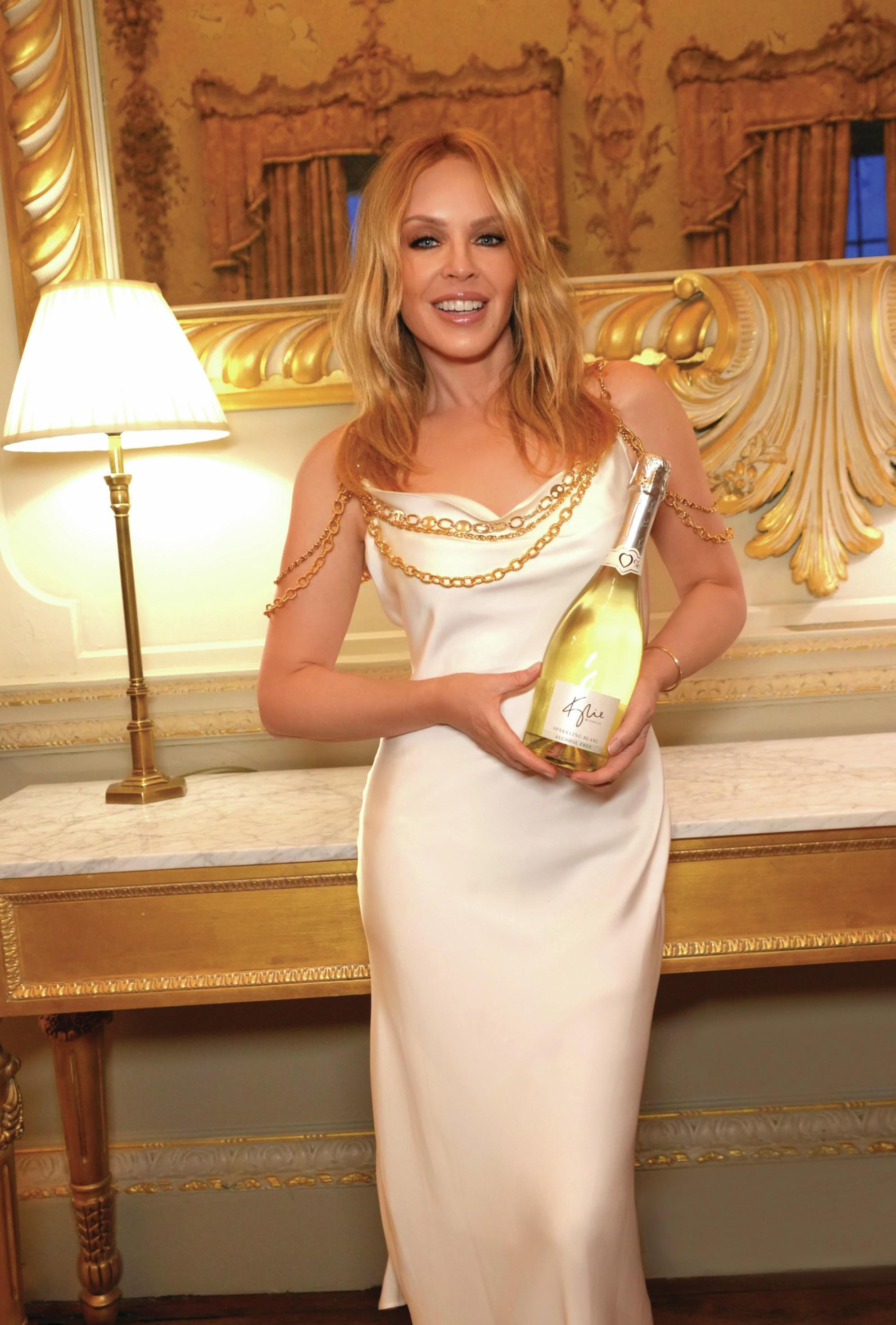
Loco motion: Kylie’s embossed bottle reinforces its premium position
4. A shift towards more premium packaging
“With the off-trade continuing to expand its no-alcohol offering, it’s crucial that a brand’s packaging stands out against the competitive set,” says Benchmark’s Schaafsma. “Premium cues will play a pivotal role as the category evolves, helping to elevate the perception of these products and drive both sales and trial. Our Kylie 0% Sparkling wines have just launched in embossed bottle, with a 0% crest reinforcing its premium positioning. The packaging of no- and low-alcohol drinks must evoke a sense of occasion and sophistication, ensuring they feel just as special as their alcoholic counterparts.”
Wild Idol’s chic bottle, as well as the liquid inside, has won it listings at a number of Michelin-starred restaurants and luxury hospitality venues, including The Ivy, Nobu, The Dorchester Hotel, Mandarin Oriental, Hakkasan and the five-star Gleneagles hotel in Perthshire, Scotland.
“We’re delighted to see Michelin-starred restaurants embracing the demand for premium alcohol-free options,” CEO Paul Beavis told db earlier this year. “We pride ourselves on offering sophisticated, authentic alternatives that meet the high standards of fine dining. It’s great to be featured in so many prestigious establishments.”
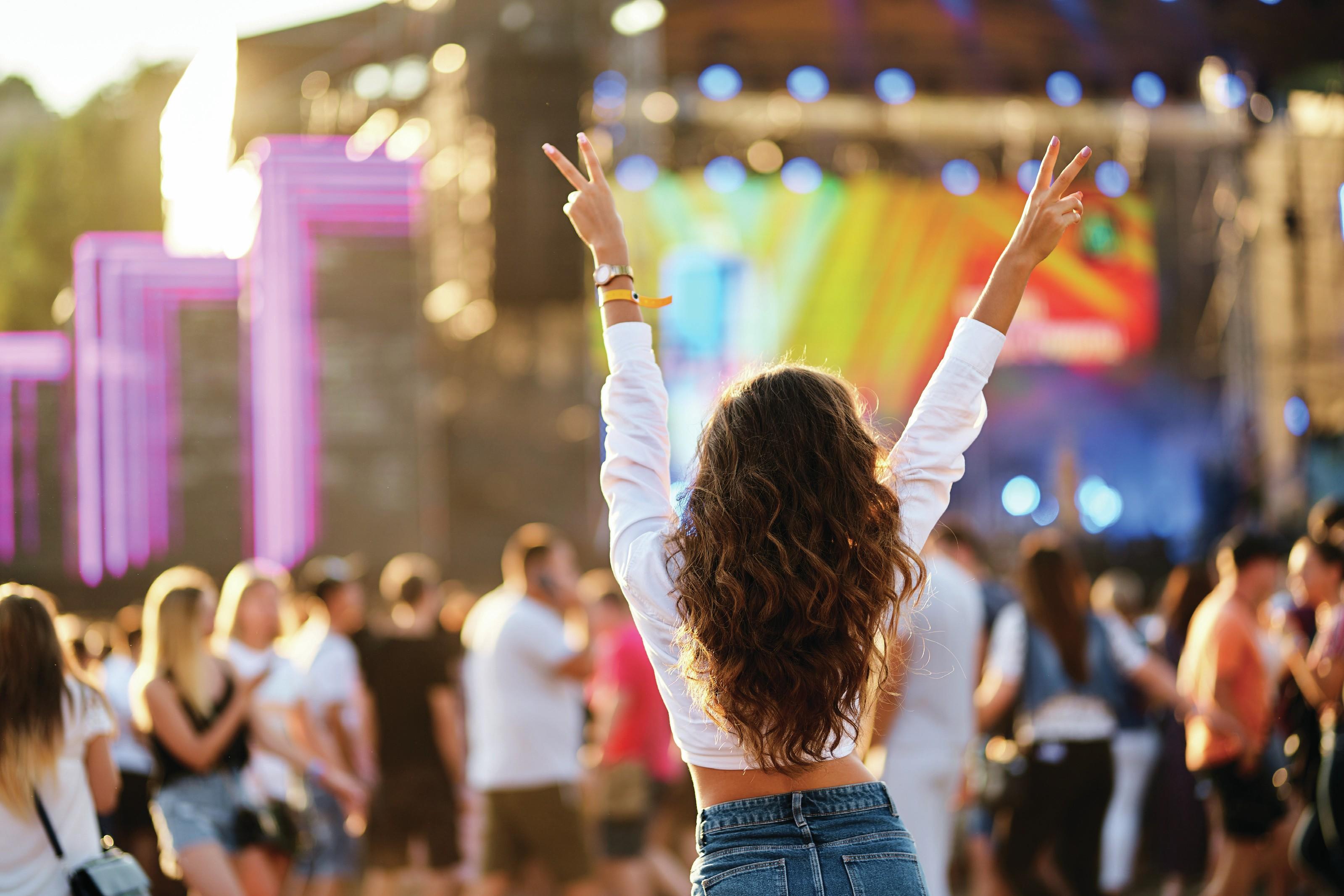
5. Increased presence at live events
Pubs, hotels and restaurants aren’t the only on-trade channels making a killing on no- and low-alcohol sales. Festivals and sporting events are starting to get in on the act too.
“The events sector is raising the bar – literally,” says Club Soda’s Laura Willoughby. “Festivals across the UK are embracing alcohol-free bars, and the Live Awards [which celebrate live music and entertainment] took it one step further this year, showcasing an incredible range of alcohol-free options. With 61% of event organisers reporting increased demand for non-alcoholic drinks, venues and caterers are really stepping up to meet this need.”
Wild Idol was poured at Glastonbury, Royal Ascot and Wimbledon last year.
And, in August 2024, Athletic Brewing became the first alcohol-free beer partner of Premier League football club Arsenal, with the brand launching specially branded four-packs of its Run Wild IPA featuring the Arsenal logo.
Oktoberfest 2024 also saw the first booze-free beer garden open to visitors to the traditional beer festival, with the local administration deliberately choosing to position the space in the middle of the city so that it would be “anchored in the centre of society”. Soft drinks, mocktails, juices, water and non-alcoholic beers were on offer in the alcohol-free beer garden.
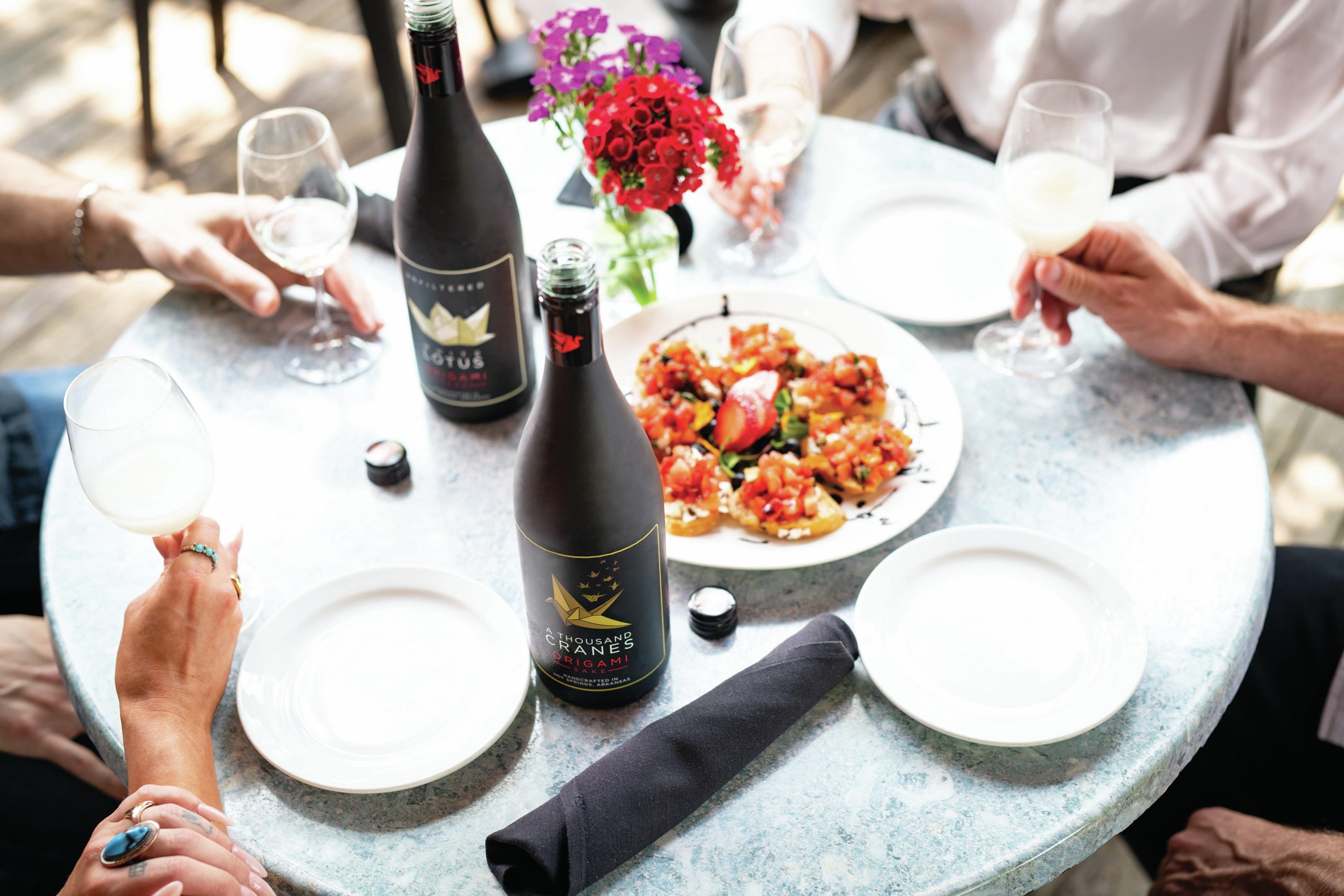
Rice guys: Origami Zero brings “the artistry of sake” to everyone
6. Asian influence will start to blossom
As the popularity of no-and-low drinks spreads around the globe, more brands are tapping into the ancient wisdom of Asian cultures to create a captivating story. London-based Impossibrew, which soft-launched in 2022, crafts its 0.5% ABV ‘enhanced lager ’ from a centuries-old Japanese recipe.
Co-founder Mark Wong, born in Hong Kong, had to stop drinking alcohol aged 22 after receiving a life-changing health diagnosis. He decided to look for alternative ways to socialise and relax, and says he happened upon “an ancient Japanese text from 1211AD – the Kissa Yojoki – which details natural herbs with powerful relaxation properties”.
Wong claims his glutenand alcohol-free lager combines “ancient wisdom with modern science”. Impossibrew has sold more than 1m cans, thanks to its unique formula of natural ingredients including L-theanine, an amino acid found in green tea and thought to protect brain wave activity, and ashwagandha, used for millennia in Ayurvedic medicine.
The combination, Wong says, offers “the unwinding experience that drinkers seek, without alcohol”.
Another brand incorporating Asian history into its core message is US-based Origami Sake, which launched an alcoholfree sake in December, made using yeast which does not produce alcohol. Co-founder Ben Bell says: “With Zero, we’re offering a product that brings the artistry of sake to everyone.”
Arkansas natives Ben and Matt Bell state that their intention is to make the US the ‘Napa Valley of sake’, as Arkansas accounts for more than 50% of the nation’s rice production. “Sake has a 1,500-year history in Japan, with techniques refined over centuries,” says Matt Bell. Creating an alcohol-free version required “adapting equipment from the wine and beer industries, but we’re proud to blend this tradition with Arkansas’ exceptional resources to create something truly special”, Bell adds.
According to Rish Ravalia, UK market manager for hemp-based non-alcoholic liqueur The Pathfinder, savoury Asian ingredients will become much more prominent in alcohol-free drinks throughout 2025. “Think Thai basil in an alcohol-free Mojito, or tamarind in a Boulevardier,” he says.
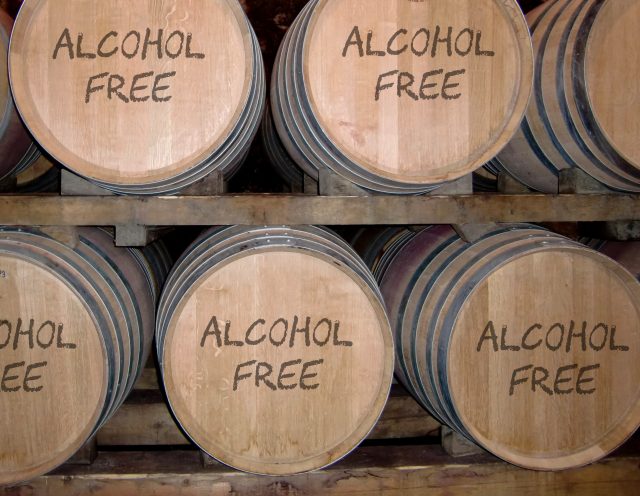
What’s needed to truly disrupt the no-and-low sector in 2025?
Rish Ravalia, UK market manager, The Pathfinder: “Pricing. We should be charging the same amount for quality alcohol-free products as we do for those containing alcohol. Let’s focus on the power of quality brands, instead of letting the price dictate our experience.”
Paul Beavis, CEO, Wild Idol: “Strong marketing and stand-out packaging will drive visibility and attract a wider audience, showing that no- and low-alcohol options can be just as indulgent and celebratory as their alcoholic counterparts.”
Amruta Vyas, director of brand marketing, De Soi: “Clear education and category building is key. Many consumers still perceive non-alcohol options as inferior or confusing. Brands must clearly communicate flavour, function and occasion to resonate with consumers. Alcohol-free beverages must also seamlessly integrate into mainstream drinking occasions like happy hours, dinner parties and holidays.”
Paul Schaafsma, MD, Benchmark Drinks: “Looking ahead, we expect premiumisation, flavour innovation and lower-calorie options to be key growth drivers, alongside investment in quality and consumer education to broaden the category’s appeal further.”
Laura Willoughby, founder, Club Soda: “The alcohol-free sector is focused on feeling and occasion, rather than specific ingredients, which leaves the space wide-open for exciting innovation. I see retail beginning to assert itself in this space more, offering diverse alcohol-free options beyond global brand extensions. Canned wines and half-bottle wines will also start to hit the UK – formats that are very welcome in this category. Following the duty changes, I think we will begin to see the consumer (rather than the industry) make the decision on what ‘mid-strength’ really means in wine (at Club Soda, we think it is around 6% ABV and below).”
Related news
Butcombe Brewing Co sees surge in no and low alcohol sales
Asia's irresistible rise of no and low cocktail menus
How low and no alcohol brands are reviving football shirt culture in Spain

